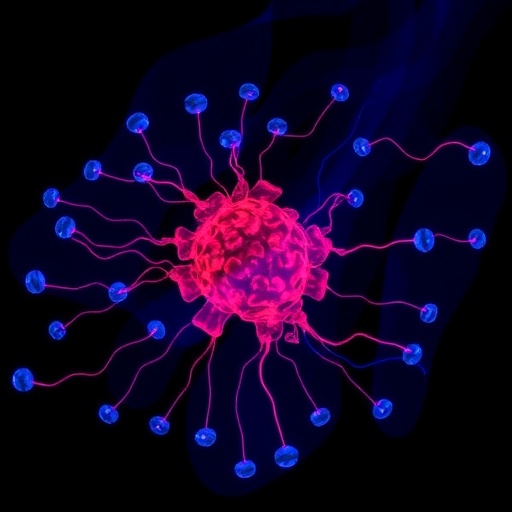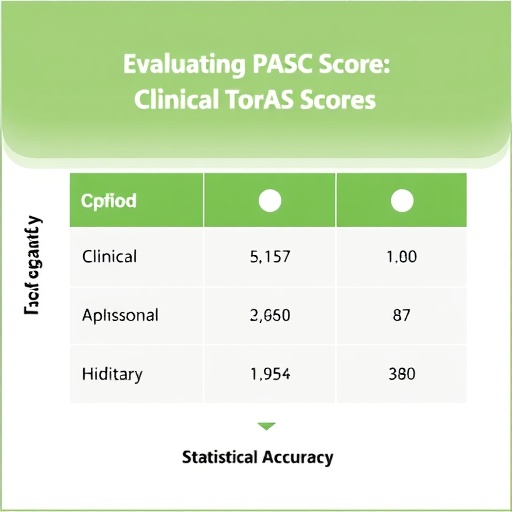In a breakthrough study that deepens our understanding of programmed cell death, particularly pyroptosis, researchers have unveiled the critical role of the kinase RIOK2 in the intracellular trafficking of death-signaling complexes. The study delineates how RIOK2 orchestrates the translocation of the FADD–RIPK1–Caspase-8 complex from lysosomes to the endoplasmic reticulum (ER), a process essential for triggering pyroptotic cell death through Gasdermin D cleavage. This insight not only enriches the molecular narrative of inflammation-driven cell demise but also opens novel avenues for therapeutic interventions targeting inflammatory and infectious diseases.
Pyroptosis, a lytic form of programmed cell death, is typically initiated upon sensing pathogen-associated molecular patterns, with lipopolysaccharide (LPS) stimulation being a classic inducer. Prior studies established that Caspase-8 and RIPK1 can co-localize on lysosomes following LPS/5z-7 stimulation, suggesting lysosomes as pivotal signaling hubs. Intriguingly, this new investigation expands upon this observation by uncovering how the kinase RIOK2 influences the spatial reorganization of this killing complex within the cell, specifically facilitating its relocation to the ER.
The researchers employed confocal microscopy to visualize macrophages stimulated with LPS/5z-7, revealing a striking co-localization pattern between lysosomes and ER, indicating that these organelles physically interact during pyroptotic signaling. Notably, when RIOK2 was genetically deleted in immortalized bone marrow-derived macrophages (iBMDMs), this co-localization was substantially diminished, pointing to RIOK2 as a key regulator driving lysosomal transport to the ER.
To provide biochemical evidence supporting these cellular observations, the team isolated lysosomal and ER fractions from the stimulated macrophages. They discovered that while the FADD–RIPK1–Caspase-8 complex accumulated initially on lysosomes, it subsequently appeared in higher amounts on the ER over time. More importantly, RIOK2 deficiency had no significant impact on the complex’s presence in lysosomes but almost completely abolished its appearance on the ER, indicating that RIOK2’s role is specifically linked to facilitating translocation rather than initial complex formation.
The functional consequence of this translocation was underscored by examining Gasdermin D (GSDMD), a pore-forming protein whose cleavage is pivotal for executing pyroptosis. Increased cleavage of GSDMD at the ER followed LPS/5z-7 treatment in wild-type cells; however, in the absence of RIOK2, GSDMD cleavage was markedly reduced. This suggests that the lysosome-to-ER translocation orchestrated by RIOK2 is a prerequisite step enabling GSDMD activation and subsequent cell lysis.
Understanding the mechanism by which RIOK2 governs this intracellular transport led the researchers to explore the cytoskeletal machinery involved. Vesicle trafficking within cells typically relies on motor proteins traveling along cytoskeletal tracks. Among these, myosin II, a motor protein activated by phosphorylation at specific serine and threonine residues, emerged as a candidate collaborator with RIOK2.
Western blot analysis showed pronounced phosphorylation of myosin II in wild-type iBMDMs stimulated with LPS/5z-7, a modification absent in RIOK2-deficient cells. Pharmacological inhibition of myosin II using (-)-Blebbistatin prevented the coalescence of lysosomes and ER observed in stimulated cells, thereby corroborating myosin II’s essential role in lysosome translocation. Importantly, this inhibition had no further effect in RIOK2 knockout cells, suggesting that RIOK2 functions upstream of myosin II activation.
Further molecular interactions were uncovered through immunoprecipitation and mass spectrometry studies in TNFα + 5z-7 stimulated HeLa cells, identifying myosin II as a predominant FADD-interacting protein. These findings were reinforced by endogenous co-immunoprecipitation assays that confirmed a direct interaction between FADD, myosin II, and RIOK2. An in vitro kinase assay demonstrated that RIOK2, in the presence of FADD, mediates the phosphorylation of myosin II, implying that RIOK2 activates myosin II to facilitate lysosome movement toward the ER.
Functional assays demonstrated the biological impact of these molecular events. Treatment with the myosin II inhibitor significantly attenuated cell death, as measured by ATP levels, lactate dehydrogenase (LDH) release, and overall cell viability assays in LPS/5z-7 stimulated macrophages. Additionally, pro-inflammatory cytokine release, specifically IL-1β and IL-18, was reduced upon inhibition, reinforcing the centrality of the RIOK2-myosin II axis in pyroptosis induction.
This work elucidates a sophisticated regulatory layer in pyroptotic signaling, wherein RIOK2 acts as a kinase hub connecting death signal complexes to the transportation machinery, culminating in the activation of pyroptotic effectors. The spatial regulation of the FADD–RIPK1–Caspase-8 complex is shown to be a critical determinant for cell fate decisions in response to inflammatory stimuli.
Beyond basic cell biology, these findings carry immense translational potential. Pyroptosis plays a dual role—on one hand guarding against pathogens and, on the other hand contributing to pathological inflammation in diseases such as sepsis, autoimmune disorders, and cancer. Targeting RIOK2 or the downstream myosin II phosphorylation pathway offers a novel strategy to modulate pyroptotic responses therapeutically, potentially curbing excessive inflammation without compromising immune defense.
Moreover, unraveling the molecular choreography between lysosomes and ER adds to the growing appreciation of organelle crosstalk in immune signaling. The physical translocation of death-inducing complexes reflects an underexplored mechanism by which cells spatially organize and fine-tune inflammatory responses.
Future research may investigate whether similar regulatory mechanisms exist in other cell types and pathological contexts. Detailed structural studies of RIOK2 with its substrates could reveal further therapeutic targets. Additionally, exploring how other motor proteins and cytoskeletal elements contribute to pyroptosis will deepen our holistic understanding of cell death regulation.
In summary, the study powerfully demonstrates how RIOK2 kinase controls the dynamic intracellular trafficking of death complexes, linking lysosomal signaling hubs to the ER to facilitate Gasdermin D cleavage and pyroptosis. These insights pave the way for innovative treatments that modulate cell death pathways, offering hope for improved management of diverse inflammatory diseases.
Subject of Research: Regulation of pyroptosis through RIOK2-mediated translocation of the FADD–RIPK1–Caspase-8 complex and Gasdermin D cleavage.
Article Title: RIOK2 kinase regulates the translocation of the FADD–RIPK1–Caspase-8 complex to the ER and the cleavage of Gasdermin D to drive pyroptosis.
Article References:
Ma, M., Wang, F., Cui, P. et al. RIOK2 kinase regulates the translocation of the FADD–RIPK1–Caspase-8 complex to the ER and the cleavage of Gasdermin D to drive pyroptosis. Nat Commun 16, 10060 (2025). https://doi.org/10.1038/s41467-025-65012-7
Image Credits: AI Generated
DOI: https://doi.org/10.1038/s41467-025-65012-7
Tags: confocal microscopy in cellular biologyFADD-RIPK1-Caspase-8 complex dynamicsGasdermin D cleavage in pyroptosisintracellular trafficking in immune responselysosomes and endoplasmic reticulum interactionmacrophage cell signaling during pyroptosispathogen-associated molecular patterns in cell deathprogrammed cell death pathwaysprotein complex translocation mechanismsresearch on inflammatory diseasesRIOK2 kinase role in pyroptosistherapeutic interventions for inflammation





